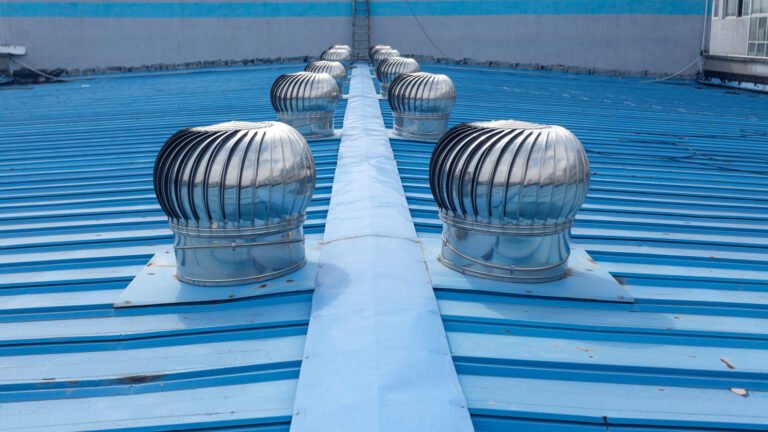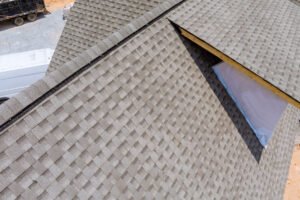Stuffy, unventilated attics are a big no, aren’t they? And, if you are already choking on dust and struggling with fresh air, hop in here to know more!
Yes, you could be familiar with different roof ventilators that pop out from the attic these days. But, you might be unsure of their performance, noise level, and use. And since it’s a comparatively new concept, you might have many doubts that confuse you further.
So, sit back and relax! We have pinpointed all your roof vent questions, analyzed them, and answered them for you. And we have emphasized the necessary details and tips to simplify the task further. So, today, let’s clear all your roof vent doubts here.
1. Are Roof Vents Necessary?
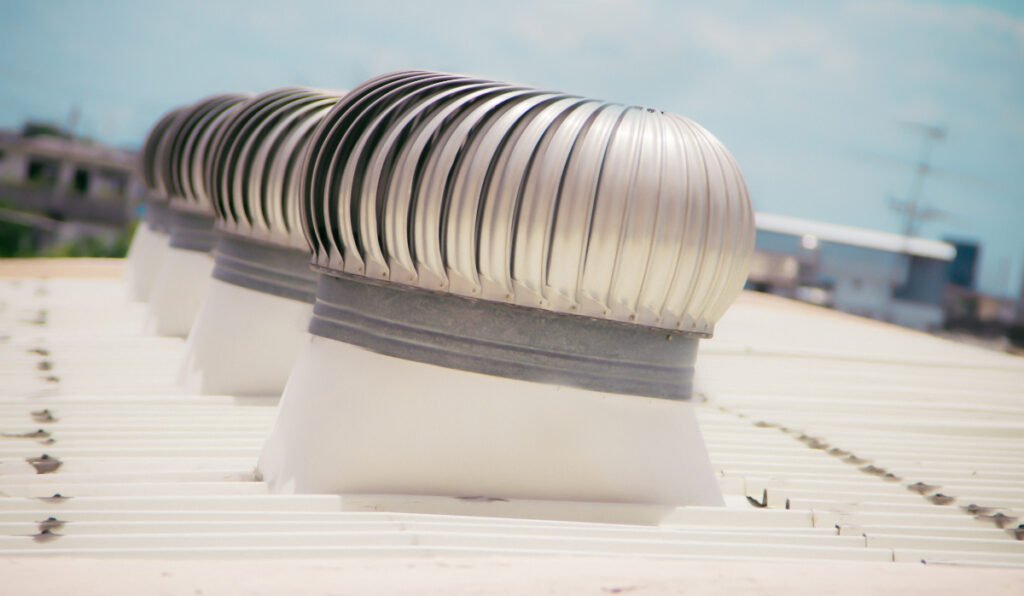
Roof vents are necessary for air conditioning compact attics in the summer and reduce water dampening and icing along the roofline in winter. These are crucial to maintain the correct humidity, temperature, and moisture in your attic at a low energy cost.
Additionally, roof vents maintain uniform air currents throughout the house and avoid all the temperature extremes that might crack and warp wooden joints and roofs. Plus, they make the attic habitable and lower your utility costs.
Roof vents also extract all the excess water and condensation along the roof shingles and enhance their durability. So, you should certainly use them to prevent water damage in pitched roofs and high rainfall areas.
Always add the roof vent above the attic insulation to absorb more moisture and allow heat to escape.
2. Do Roof Vents Cool the House?
Roof vents lower the heat and cool your house, but their efficiency depends on the type of roof vent used. For instance, powered roof vents lower the temperature by 4-5°C, whereas passive roof vents have lower performance and cool the attic by 1-2°C.
Similarly, passive roof coolers cut the temperature by 5-10°C, whereas a solar-powered roof vent might cool a tropical house by 12-13°C.
And you can even install static roof vents, gable vents, or ridge vents to reduce the heat absorption in olden roofs. Or you can get a battery-powered attic fan to absorb the heat and cool the house.
Reserve about one-sq foot of vent area for every 300sq feet of attic space to release the heat and let the cool currents inside.
3. Do Roof Vents Need Caps?
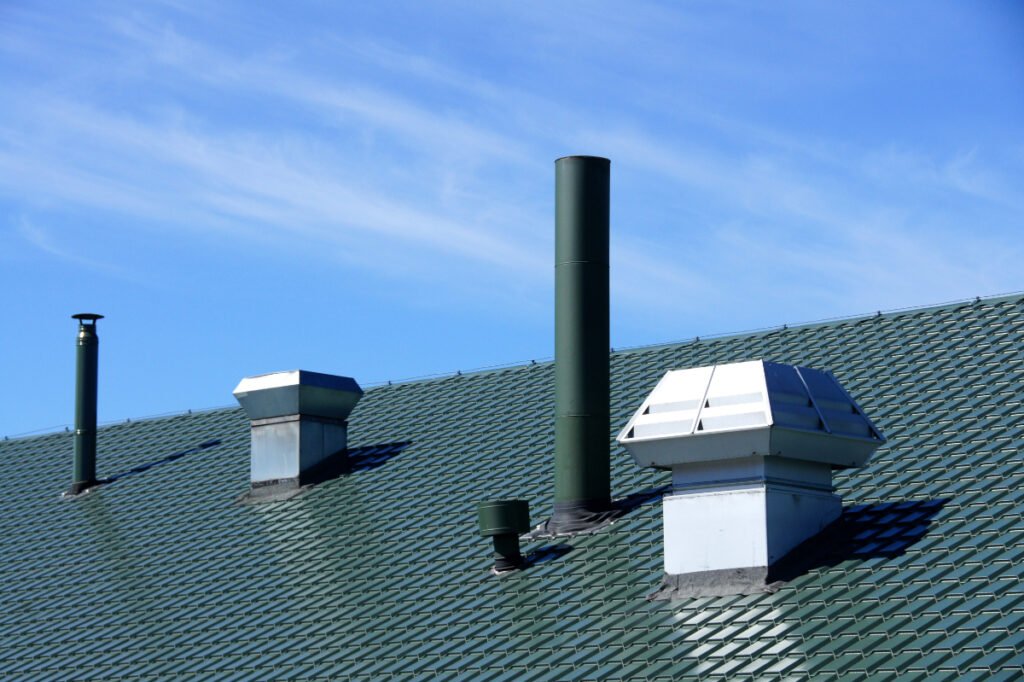
Roof vents need caps to save the debris, moisture, and pests from sneaking inside the pipe and block the airflow. But, you need not install a cap if the roof vent is connected to the central stack vent and has a proper inlet and outlet through the attic.
However, caps might disrupt the normal functioning of the vent and build more moisture in the winter. They might even clog due to the ice and block the airflow. So, avoiding vent caps in snowy or temperate regions is advisable.
Use thicker, high-heat retaining copper or galvanized steel caps to prevent freezing and rusting in winter. Or, coat your cap with a good-quality anti-rust solution for more durability.
4. Do Roof Vents Make Noise?
Roof vents are generally quiet but can cause a squeaking noise with dry lubricants or ball bearings. Its metal parts might rub against each other and increase the friction, creating a high decibel flapping sound on windy days.
But, you can quickly curtail the roof vent noise by applying wet lubes, grease, or machine oils to its ball bearings and then rubbing them vigorously for better absorption. Or, you can add a damper above the vent outlet and reduce the friction between its parts.
You can also use soft foam or spray foam insulation and add weatherstripping to stop the vent flap from banging onto the metal cover and causing a flapping sound in the wind.
Use rubber spring-loaded backdraft dampers to prevent cold air from breaching inside the vent and damaging its function in the long run.
5. Can You Paint Roof Vents?
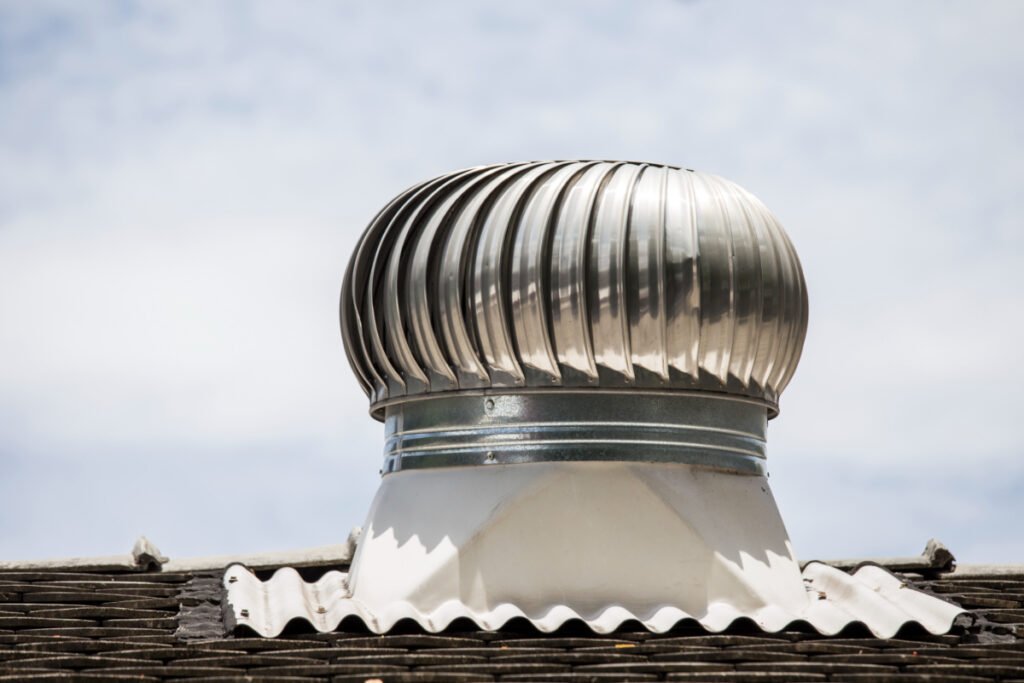
You can paint PVC or ABS roof vents with exterior latex, acrylic, or epoxy paint and then coat them with transparent enamel for more durability. But, you must first rinse the vent with vinegar, scrape the polish, and sand it for better paint adhesion and finish.
And don’t forget to check the color codes with your local homeowner’s association before you start painting. For instance, Westside HOAs make it compulsory to paint the vent in beige and white, whereas others are more flexible and allow green, gray, and brown vents.
Further, arm yourself with a harness, an extension ladder, a water hose, sandpaper, paints, brushes, or a spray can, and follow the steps below to paint the roof vent in no time.
- Step 1: Install the safety harness along the roof’s edge and mount the extension ladder to create a safe base for painting the vents.
- Step 2: Unscrew all the caps and hinges and clean the vent using a high-pressure water hose to remove all the oils, dirt, and debris from its surface.
- Step 3: Sand the surface and apply a bonding primer or sealer to roughen the surface. Next, paint it using brushes or spray cans as desired and use vertical strokes for an even finish.
- Step 4: Seal it off with an enamel or nano glaze coating and air dry it.
You can easily paint the vent sidings and interiors, but never paint the vent hinges and lids as they might stick and won’t operate smoothly.
6. Are Ridge Vents Better Than Roof Vents?
Yes, ridge vents are better at heat and vapor exits than traditional roof vents. Plus, they run along the entire length of the roof and distribute fresh air uniformly. They also flush well into the roof line and don’t protrude like traditional roof vents.
And here are some more points to compare a ridge vent and a roof vent:
| Parameter | Rigid Vent | Roof Vent |
| Vent Shape | Tapering – catches air at the lowest point and releases heat from a wider top | Lateral – even air distribution |
| Vent Length | Along the entire roof-line | 500 – 700 mm in parts. |
| Warranty Period | 7 – 8 years | 2 – 3 years |
| Use | Exhaust Vents | Intake Vents |
| Visibility | Blend with the roof-line | Protrude from the roof line |
| Best Application | Complex roof systems with multiple, short roofs | Planar slabs and simple roofs |
| Cost | $400 – 500 | $200 – 300 |
In a nutshell, ridge vents are better than roof vents in complex roof systems, trusses and pitched roofs in high rainfall regions. But, since they are expensive and difficult to install, you can use traditional roof vents for planar roofs in drier areas.
7. Do You Need Roof Vents with Spray Foam Insulation?
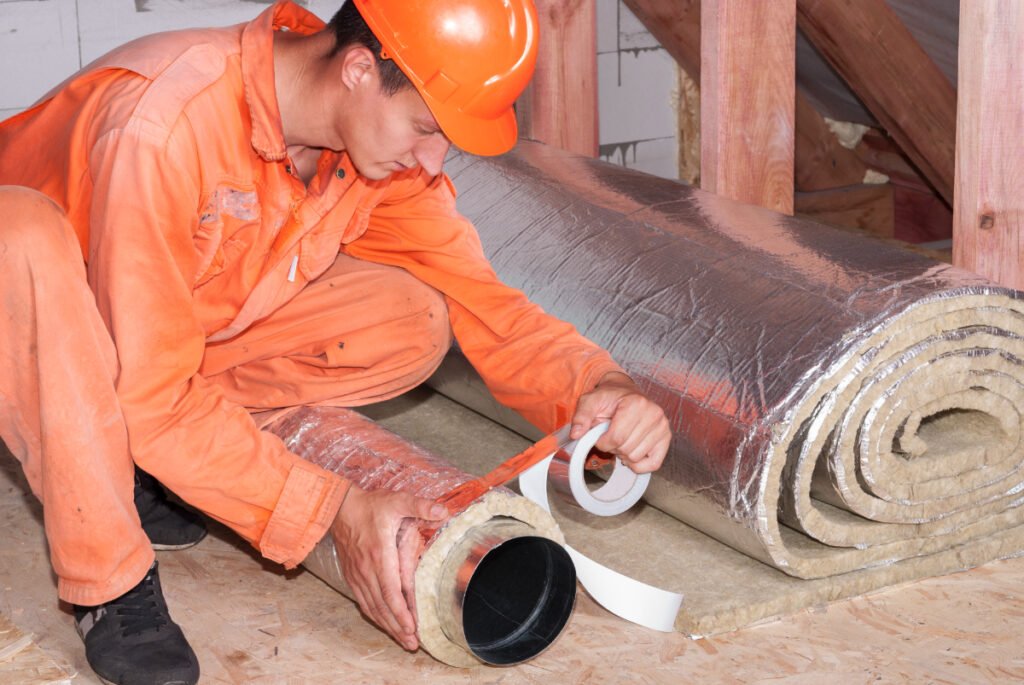
You do not need insulated vents if you already have enough foam or cardboard insulation on the roof rafters and joists to create a tight air seal. But, you’ll need insulated vents if you have an insulated attic floor that might transfer the cold currents to the roof.
However, roof vents with spray foam insulation might get too hot in the summer and cause additional condensation or precipitation along the pipe lining. So, it’s better to use a thin spray foam layer and a dehumidifier in warmer and tropical climates.
Alternatively, you can blow fiberglass or cellulose at the bottom of the roof vent and use a simple reflecting sheet at the top. This will maintain the proper temperature and pressure and save the vent from all the additional water damage in the monsoon.
Use baffles or flow-directing panels to channel exhaust air to the outlet and reduce its absorption in the spray foam insulation.
8. Do You Need Roof Vents with a Breathable Felt?
You need roof vents with a breathable felt to prevent additional water ingress and moisture seepage in high-rainfall areas. Roof vents will also create a secondary barrier against the sun, hail, and snow and protect your felts from direct weather damage.
Similarly, porous breathable felts lower the vapor resistance of roof vents and naturally allow water vapor to exit the pipe. So, you can use these instead of power-driven roof vents and save energy costs.
Moreover, breathable felts have a low condensation rate and can extensively eliminate mildew and fungal growth in your vent pipes. So, use them in combination with traditional or ridge roof vents and ensure complete attic ventilation in no time.
Never use wrought iron screws and nails to join the felt to the vent. Instead, use flexible clout nails that can be removed and fixed easily without damaging the felt fabric.
9. Where Should Roof Vents Be Installed?
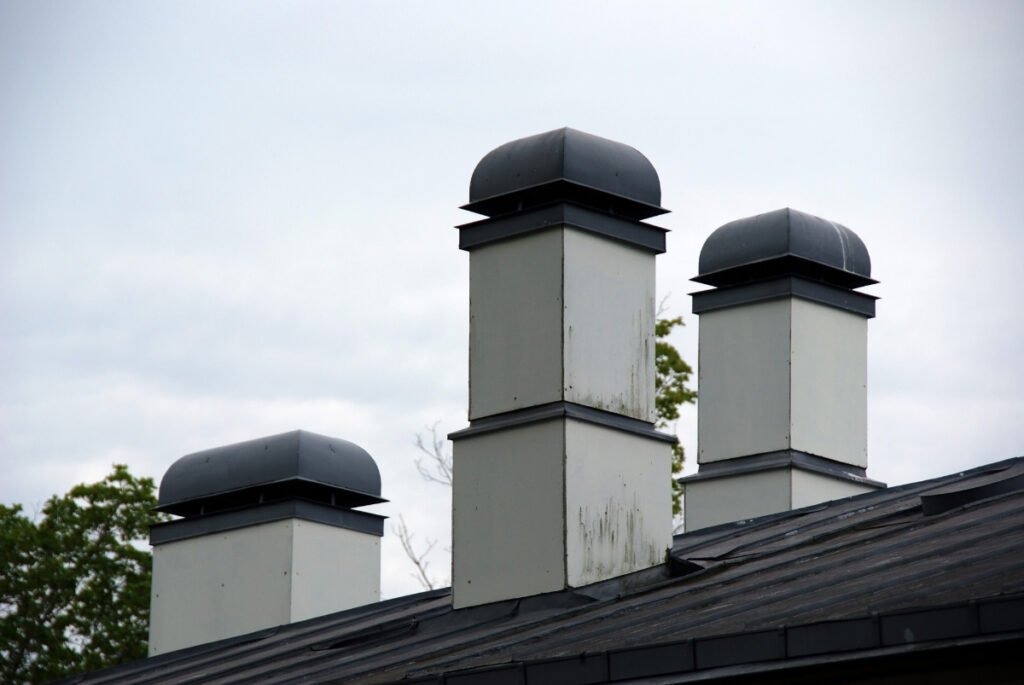
Roof vents should always be above the rafter, insulation, or at the apex. But, you can add some extra vents at the gable and the soffit walls for better ventilation. Similarly, you can mount lower roof vents near the attic’s floor to raise the hot air and discharge it.
Additionally, roof vent intake pipes should always be present at the lowest point of the attic, while exhaust pipes should be at the highest roof point for better air circulation.
Always install your roof vents at a distance of at least 10 -12 inches from the roof line to keep the dust and debris away.
10. How Much Does It Cost to Install a Roof Vent?
Roof vents cost about $300 – 550 for the complete installation, including materials and labor. But, you might need $1000 – 2000 to vent pitched, solar-paneled roofs. Similarly, cupola, ridge, and soffit roof vents are expensive and cost $900 for installation.
You might also need additional labor charges to vent high-pitched or shingle roofs as they might need caulk or vapor barrier for complete insulation. Costs might also hike with additional covers, permits, and warranties.
Use static, solar, or wind-powered vents instead of cupola and ridge vents that hike the installation and energy costs.
11. How Many Roof Vents Do I Need?
You’ll need one roof vent per 300 square feet of insulated attic space, but you’ll need to use two roof vents for the same area in uninsulated attics. Thus, you must use 2 – 4 roof vents for smaller attics and 5 – 10 roof vents for larger or multiple-roofed attics.
However, the number of roof vents largely depends on the size, type of attic, and overall climate. So, refer to our guide on ‘ How many roof vents do I need’ to know all the calculations and tips.
Combine roof vents with exhaust or attic fans to boost performance and have optimal airflow with lesser vents.
Roof vents are a comparatively new concept. So, they might cause some confusion with capping, painting, or application. Or, many people could be reluctant to install it because of its noise but might face the wrath of hot attics and fungal growth along the roof.
But now that you have all the answers, it would be easy to install them, paint them or reduce their noise with simple day-to-day techniques. And you can further add some insulation or breathable felt to boost their performance and enjoy a gust of fresh air in your room.

